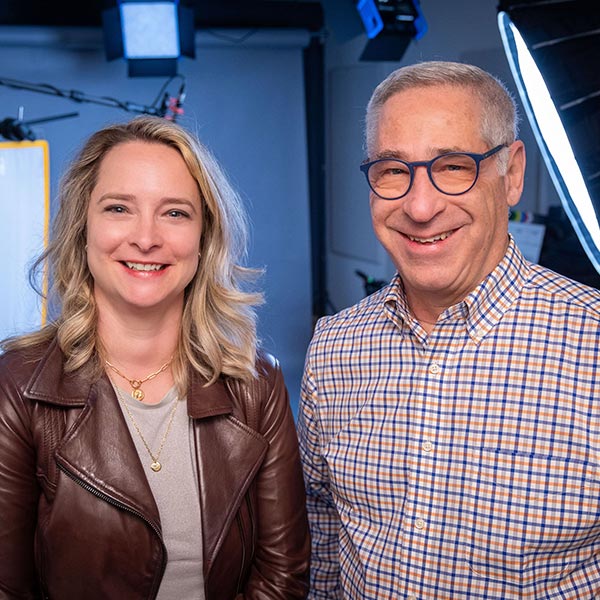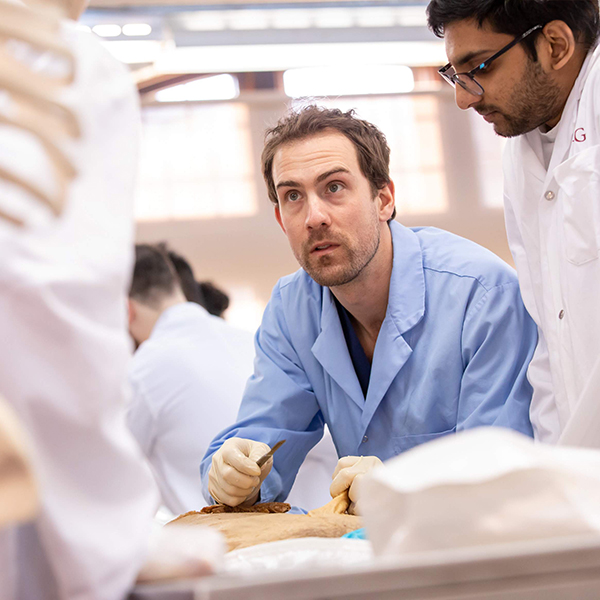When it comes to patient education initiatives, Dr. Mike Evans, BA’85, has an established track record for dealing with medical topics in an entertaining way.
But before his animated health videos became a huge hit on YouTube, Evans admits that not all of his ideas were home runs.
One that didn’t pass muster, Evans recalls, was to put an overview of patients’ medication on hockey cards. “We thought they were going to be fantastic,” he says, but the seniors who tried it out found the concept too lighthearted for medication.
“We were running on a number of failures and then I said let’s do one of these whiteboard things.”
It was a momentous decision.
With a heavy emphasis on medical evidence and a straightforward, jargon-free tone, Evans and his collaborators (who included former McGill student Nick de Pencier, an award-winning documentary filmmaker), created their first video, 23 and 1/2 hours: What is the single best thing we can do for our health? (The answer supplied to that question, by the way, is a half-hour of physical activity each day).
Posted on YouTube with no fanfare, the video went viral that same week. It’s now been viewed millions of times. 23 and 1/2 hours was even referenced in an episode of Orange is the New Black.
Many popular animated videos followed—on back pain, flatulence, the prostate specific antigen (PSA) test, stress, the effectiveness of New Year’s resolutions and other topics—all featuring Evans, a family physician, narrating the health messages in a folksy style while visuals are drawn on a whiteboard.
Last September, Apple hired Evans, then a staff physician at St. Michael’s Hospital, and a professor of family medicine at the University of Toronto, to help lead its health innovation efforts.
Evans can’t discuss the details of what he’s working on at Apple, but he’s excited about the opportunity.
“When you practice medicine, you realize people come in your office, see you and you make certain decisions, but the other 363 days a year, I have no idea [what they’re doing],” Evans says.
“And I think coming here is a little bit like being a minister of health for 800 million people as we stare at our phones two hours a day. There’s this huge opportunity for those other 360-plus days a year and the opportunity is around the kind of big thing in health care, which is just positive behavior change.”
A hypothetical example of a future health innovation that Evans has mentioned in media interviews involves blood pressure. In the past, Evans says, he would see a patient three times a year for their high blood pressure. “And probably about half of the people stop taking their blood pressure pills after a year because it’s a silent illness. They don’t really understand high blood pressure.”
In the future, Evans raises the possibility of sensing blood pressure from “your watch or whatever, attachment.” You could receive a digital reminder to take the medication. “I could nudge you towards a low-salt diet.”
Evans, who has a daughter at McGill, currently travels back and forth to California from Toronto, where his family is still based. “I have a son in Grade 12 and we didn’t want to pull him [out of school].”
He and his wife, Sue, who is also a family doctor, plan to relocate to California this summer with their youngest child.
Evans majored in English lit at McGill.
“I had no idea what I wanted to do. I was good at writing essays at the last second,” Evans chuckles, “and thus picked English literature.”
He eventually made his way into medical studies at McMaster University, but not before being selected for the national rugby team and working with Mother Teresa in India.
While an undergraduate arts education is unusual for a doctor, it proved to be a valuable experience for Evans.
“The thing that’s made my career go to the next level is that I sort of became a scriptwriter for YouTube. So my arts degree is actually what’s made my medical degree much more powerful.”
Evans’s work on whiteboard videos didn’t come out of left field. He had already established a niche in educating patients and had launched a popular mini-med school lecture series for the public at the University of Toronto.
While millions have watched his videos, Evans says some topics have proven to be more popular than others.
“Sometimes it’s the message. We did one on [the dangers associated with] drinking and people don’t want to hear too much about that.”
The most popular video is still 23 and 1/2 hours, which has now been translated into more than 10 languages.
In one week, the Arabic version drew 800,000 views and was the fifth most-watched thing on YouTube, he says.
“It’s just so interesting how the world has changed that way and how you can impact so many people if you do something creative and engaging.”


